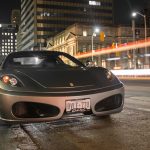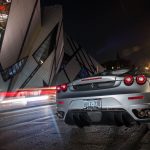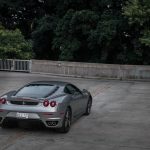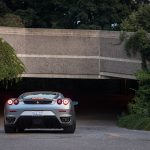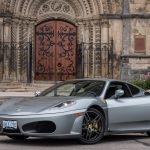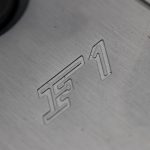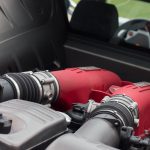[pull_quote_center]The fact is I don’t drive just to get from A to B. I enjoy feeling the cars reactions, become part of it. -Enzo Ferrari[/pull_quote_center]
I have often found myself perusing through AutoTrader.ca, salivating at the sight of exotic vehicles that are available for sale at the same price of a new respectable German car. Common sense would dictate that while these cars have depreciated significantly from their original sticker price, the maintenance, insurance and practicality would negate any inclination to explore this immature boyish fantasy. Given my stubborn personality, I refused to surrender to hearsay and conducted my own research. The biggest struggle when it comes to buying an exotic is an internal one; it’s a battle between passion and reason. In my case, I justified passion through reason, and now I own an Italian thoroughbred, a Ferrari F430
Side 1: Passion
Ownership of an exotic vehicle isn’t exclusive to the rich, and given the wide spectrum of sports cars available the only prerequisite to entry is pure passion. Society values experiences such as meeting your first love or marriage as the pinnacle of life experiences. To me, I value exotic ownership as one of life greatest experiences. Our ancestors experienced the partnership between a horse and man, and in today’s society that lesson supplemented by the partnership between man and machine working in perfect unison. In my experience, it was passion that triggered the curiosity to explore exotic ownership which was justified by perceived reason.
Side 2: Reason… Buy new or used?
The current new vehicle marketplace offers significant incentives for buyers from zero percent financing to a four year warranty / 80,000 kms (e.g., BMW New Car Limited Warranty). I quantified the value of the warranty based on coverage of expected repairs (excluding wear and tear items) along with zero percent financing as the premise of my logic. However, if you factor in depreciation after these incentives expire (e.g., four years), the depreciated value exceeds the value of the buying incentives.
My conclusion, buy a used vehicle that has realized the majority of its depreciation and set aside a reserve fund for repairs and maintenance. A benefit of a used car is the abundance of vehicle history that outlines problems and cost to repair along with elapsed time for manufactures to develop aftermarket parts to reduce costs of replacement parts.
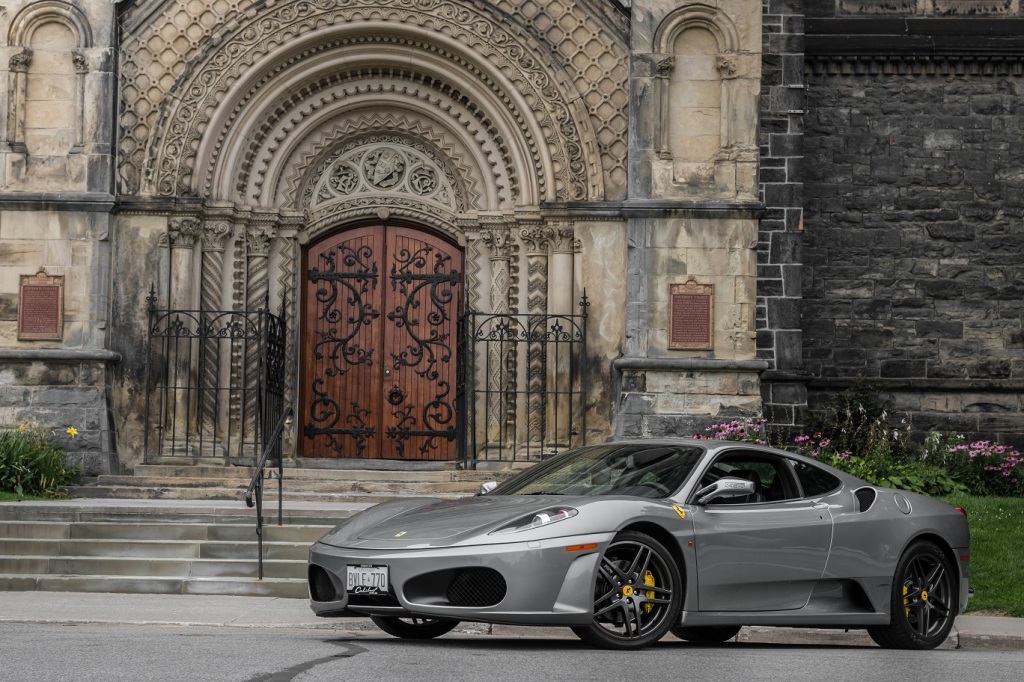
Which car?
Given my current situation living and working in downtown Toronto, I have zero utilitarian requirements for a vehicle, and the sole purpose is purely pleasure. The Aston Martin served me well, and required zero maintenance in the 1 year of ownership (6,000kms). I had my sights set on a Ferrari F430, and simple market research will show that the purchase price ranges from CAD 130,000 – 180,000 with a high premium for car with low KMs. In order to make this work, my budget was capped at CAD 110,000 which would ultimately mean a high mileage car. I paid a significant premium for my Aston given it was a car with the lowest KMs in the market, however, as a result I barely drove it and would often rent a car or take a 2 hour bus ride to see my GF because a round trip would put 100kms on the car. Now I wanted a car I could drive without worrying about mileage and losing a status of “collector” (to put it eloquently) .
A non-Ferrari owner will simply say that a car with high mileage, especially an Italian supercar will have significant running costs as parts don’t depreciate relative to the car. This is a fair and logical statement; however, I had to test this premise against feedback from Ferrari owners. There are two common mechanical issues with the car firstly, the clutch and secondly the F1 pump. Given the car I was looking at had records of these two items replaced, I knew the exact cost, and decided to accept this as a potential risk in 3-4 years. Part of the cost may be covered by a third party warranty, however given the uncertainty of the warranty providers; I took a conservative approach and assumed the full amount. The wear and tear items such as brake pads were relatively similar to that of a German “sport” series car give or take a few hundred dollars (not a major deterrent in my opinion). Once a PPI was completed and all items were taken care of by the dealer, I accepted the car. The car did not come with 9 years of service history, but I have records that all campaigns were closed and recent service history of the vehicle which included fluids, clutch and F1 pump replacement.
The Experience:
Once I was given an overview of the car, I was sitting in the parking lot, on my own, with the 4.3 V8 idling behind me. My inner child was ecstatic, here I am sitting in a supercar which I only dreamed of driving. My mind could not process the inputs that was feeding into me, the roaring sound of the engine, the feedback of the steering wheel as I turn into a corner, and the sight of Ferrari motifs all around me. I am not a race car driver, but the perfectly synched gear changes made me feel differently. Driving down Toronto streets, careful of every pothole and street car track that I crossed made me second guess my decision about buying a supercar in Toronto. But once I hit clear roads and let the Ferrari stretch her legs I forgot all about it and was fully consumed by the visceral feeling of the car. Owning a car of this caliber for me is just about the pleasure I get driving it. I don’t care about the speed of gear changes, or how I could better spend my money. This decision was not based on numbers, it’s a passion, and no sort of analysis could persuade me away from having this experience at least once in my life.
Read more from Oz at Leviathan Consulting
*Photos by CP Automotive Photography

